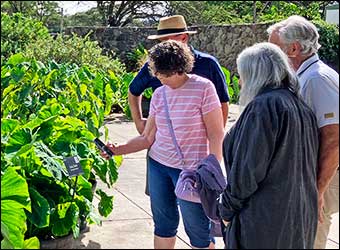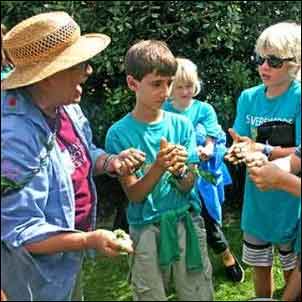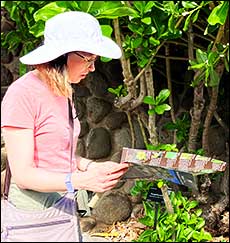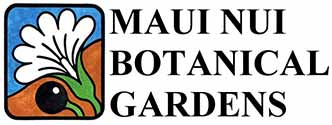Tours Offered at Maui Nui Botanical Gardens
Explore Maui Nui Botanical Gardens with a self-guided audio tour using your phone or with our printed plant guide.
Self-Guided Tours
Exploring Maui Nui Botanical Gardens through a self-guided tour using your cell phone is free with the cost of admission ($10 for nonresidents, free for residents).


A self-guided tour using your cell phone offers a personalized way to explore the diverse plants in the garden. Use our free app to quickly access audio messages for more than 102 species growing in the five acre landscape, using QR codes located on plant identification signs.
Personalize your exploration based on your interests. Whether you're into Hawaiian ethnobotany, plant biology, or simply enjoying the beauty of nature, you can tailor the experience to suit your preferences
School Tours
We offer hands-on tours and other activities for local school groups, from preschool to college, for a maximum of 2 hours, Tuesday through Friday, 9 am to 3 pm. These tours offer a unique opportunity to explore native Hawaiian plants, traditional Hawaiian uses, and conservation efforts. Tours are $2 per student.
To inquire about local school group tours, please fill out the contact form below with the following information:
School or organization name
Approximate number of students
Grade(s)
Available dates
Time of arrival
Time of departure
Subject of focus, if any


Location
The Garden is located at 150 Kanaloa Avenue in Kahului, Maui, right across from the War Memorial Stadium.
(808) 249-2798
Hours of Operation
Tuesday through Saturday,
8:00 a.m. – 4:00 p.m.
Closed occasionally for inclement weather and Hawaii State Holidays.
Admission
Members: Free
General: $10
Keiki Under 12: Free
Kama'aina: Free
(with Hawai'i ID)
A Few Native Hawaiian Plants from the MNBG Collection
- ‘A‘ali‘i (Dodonaea viscosa)
- Alahe'e (Psydrax odorata)
- ‘Ānapanapa (Colubrina asiatica)
- Hala (Pandanus tectorius)
- Hala pepe (Dracaena auwahiensis)
- Hau (Hibiscus tileaceus)
- Hō‘awa (Pittosporum glabrum)
- Hō‘awa (Pittosporum hosmeri)
- ‘Iliahi (Santalum haleakalae)
- ʻIlima papa (Sida fallax)
- Kalo (Taro), Colocasia esculenta)
- Kamani (Callophyllum inophyllum)
- Koa (Acacia koa)
- Koai‘a (Acacia koaia)
- Koki‘a, Hau hele ‘ula (Kokia drynarioides)
- Koki‘o ke‘o ke‘o (Hibiscus arnottianus subsp. arnottianus)
- Koki‘o ke‘oke‘o (Hibiscus arnottianus subsp. immaculatus)
- Koki‘o ‘ula‘ula (Hibiscus kokio ssp. kokio)
- Koki‘o ‘ula‘ula (Hibiscus kokio ssp. saintjohnnianus)
- Koki‘o ke‘o ke‘o (Hibiscus waimeae ssp. waimeae)
- Kou (Cordia subcordata)
- Kukui (Aleurites moluccana)
- Loulu lelo (Pritchardia hillebrandii)
- Loulu (Pritchardia remota)
- Maʻo (Gossypium tomentosum)
- Ma‘o hau hele (Hibiscus brackenridgei)
- Māmaki (Pipturus albidus)
- Mau‘u lā‘ili (Sisyrinchium acre)
- Milo (Thespesia populnea)
- Naio (Myoporum sandwicense)
- Nānū (Gardenia brighamii)
- Ōhai (Sesbania tomentosa)
- ʻŌhiʻa ʻai (Syzygium malaccense)
- ‘Ōhia lehua (Metrosideros polymorpha)
- Pōhinahina (Vitex rotundifolia)
- Pōkalakala (Polyscias racemosa)
- ‘Uala (Sweet Potato)
- ‘Uki ‘uki (Dianella sandwicensis)
- ʻUlu cv. ‘Maʻafala’(Artocarpus altilis)
- Wauke (Broussonetia papyrifera)
- Wiliwili (Erythrina sandwicensis)

